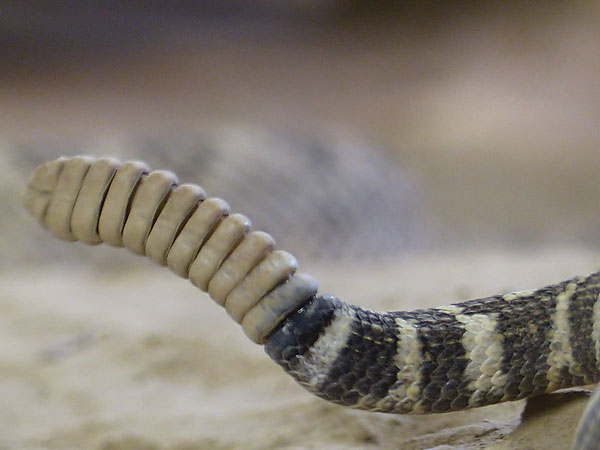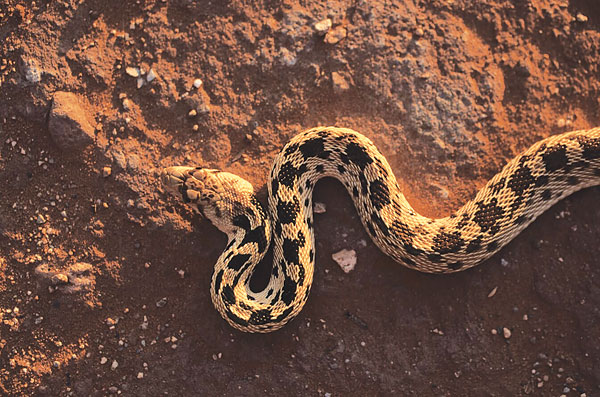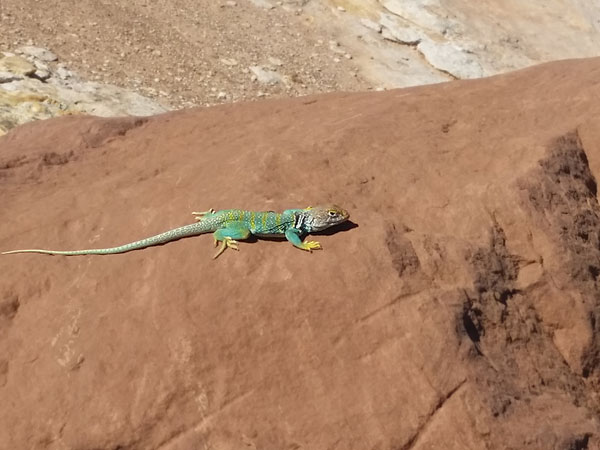With spring sliding into summer, the desert’s reptilian scene should be in full swing. Cold-blooded snakes and lizards need external heat to fire up their bodies, so life in the desert suits them well!
Though some visitors new to the area, and also those that live here, worry about rattlesnake encounters, but they have little to fear. The local “buzz worm,” the midget-faded rattlesnake, often prefers silence or to slither away to safety when approached. Of course, if the snake is threatened, it will coil up and trigger its alert system warning. The buzzing sound, which in reality is the rapid, rattling of the snake’s tail buttons, is one of those international sounds buried deep within our own reptilian brains that doesn’t require a lot of thought.
Most rattlesnake strikes involve nosy dogs rather than humans. If your camping mates try to convince you that snakes are attracted to the heartbeat of a prone camper, don’t believe them. That’s just summer camp lore meant to spook someone. These snakes prey on small rodents and skip the humans. Even if they do strike, their fangs may not release any toxic venom. More worrisome are juvenile rattlesnakes which haven’t learned to not envenomate during each bite; hence, their biting pattern may be scarier than the adults.
 The other common desert dwelling snake one might encounter is the bull or gopher snake. Though these snakes may mimic a rattlesnake by coiling up and vibrating their tails, their bite is not venomous. Agile climbers, these snakes can climb trees or cling to sandstone walls while searching for prey. Both gopher snakes and rattlesnakes may seek the warmth of paved roads on cool summer nights, so be aware of their prostrate forms while driving in the evening.
The other common desert dwelling snake one might encounter is the bull or gopher snake. Though these snakes may mimic a rattlesnake by coiling up and vibrating their tails, their bite is not venomous. Agile climbers, these snakes can climb trees or cling to sandstone walls while searching for prey. Both gopher snakes and rattlesnakes may seek the warmth of paved roads on cool summer nights, so be aware of their prostrate forms while driving in the evening.
Like snakes, various lizards are also commonly observed in summer.
The smallest and probably most common lizard is the side-blotched lizard, named for the dark armpit patches on this sandstone-colored lizard. These small lizards are the first ones to appear in spring, as their small bodies don’t need a lot of heat to warm up. In fact, they may even appear in winter during warm spells as they break out of their winter slumber. The side-blotched and ornate tree lizard are both small and often fall prey to birds, snakes, and other predators.
“Blue bellies” is a generic term which describes sagebrush or western fence lizards. The male’s underside has patches of blue which more visible as the males engage in territorial or breeding displays such as doing pushups or posing with arched backs. The blue bellies, whiptails, and smaller lizards all prey on a variety of insects, moths, beetles, spiders, and grasshoppers. 
The classic desert-dwelling reptile is the collared lizard, name for the dark, neck bands. It could easily have been called the colorful lizard because of its striking yellow-colored head and bluish-green bodies. These lizards may be observed sunning themselves on a high perch before sneaking off in pursuit of prey. When speed is in need, these reptiles may raise up on their hind legs and sprint after prey or away from a predator. Think “Jurassic Park” and you’ll appreciate the current size and appetite of these Canyon Country reptiles!